Violet "Chic poppy": features and care
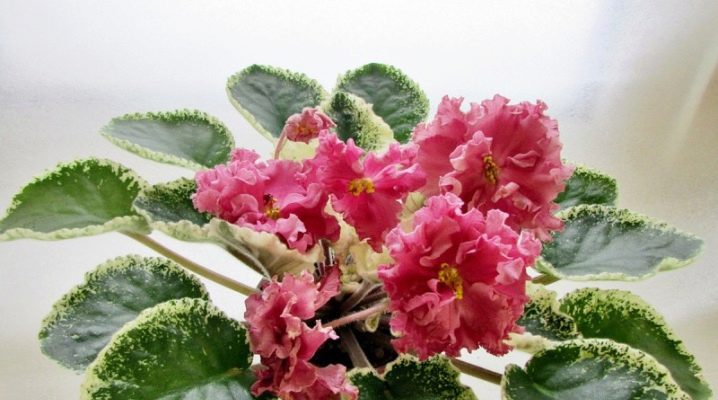
Flowers in human life have become something integral and beautiful. Giving a gorgeous bouquet is a great way to express your love and respect. This article will talk about the "Chic Poppy" violet, as well as about its features and nuances of cultivation.

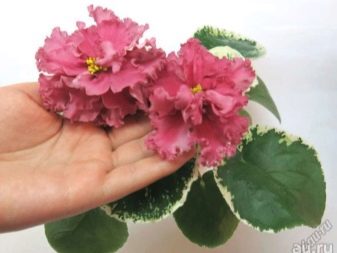
Description
From the very beginning, one important nuance should be clarified - this plant is not a violet. In this case, we are talking about Saintpaulia, which all breeders are accustomed to calling exactly violet. "CM-Chic Poppy" comes from the Gesneriaceae family and is evergreen. The species was developed by a breeder named Morev. Leaves are collected on the petioles in the form of a stunted rosette. Their color is very remarkable - from the middle to the edge, it smoothly turns into a white shade. Some gardeners come across plants with almost completely white leaves.
If we talk about flowers, they are quite large, at least 6 centimeters in diameter. The petals are soft and wavy, located on high peduncles. In a young plant, during its very first flowering, the flowers become so heavy that they sink to the leaves, but over time the plant grows stronger and this does not happen anymore. And also a young plant can be distinguished by its color - as a rule, it is a bright pink tone. Older violets have a rather brick shade.
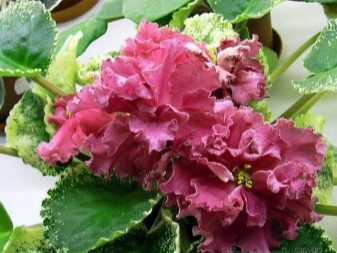
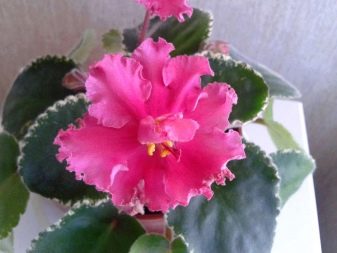
The flowering process takes quite a long time and is very abundant.
The buds open extremely slowly, just like a poppy (hence the name of this saintpaulia). Once flowering ends, the bud leaves a small box of seeds. Saintpaulia "Chic Poppy" grows mainly in mountainous areas, however, it is also grown at home. This species is not a variety, but it has many varieties, which are varieties.
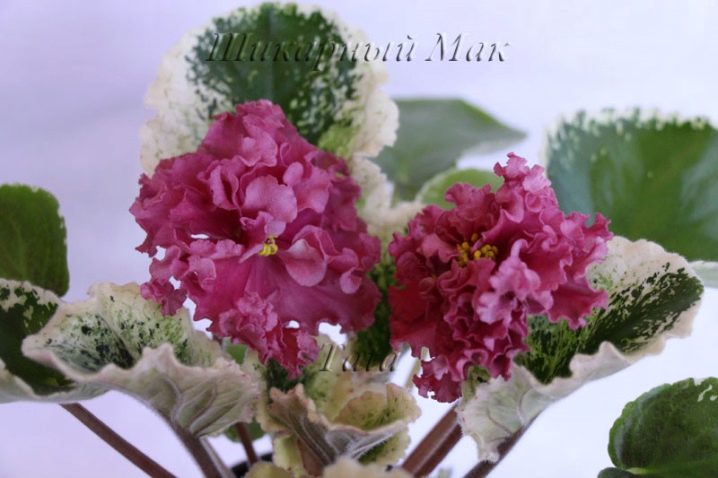
Growing conditions
In order for the plant to grow strong and beautiful, it will take a lot of work, but the result will definitely delight any gardener. So, in order to create all the necessary conditions for the "Posh Poppy", it is necessary to take care of several factors.
Lighting
For any experienced gardener, it will not be a secret that this violet is very susceptible to direct sunlight. Lighting in this case should be slightly diffused. If the plant is located on the south side, then it must be shaded. The eastern and western sides are considered the best location for this violet, but even in this case, in the summer, it should be removed in the shade, at least for 2-3 hours. With an excessive amount of light, the flower begins to roll its leaves into a tube, and the lack of it lengthens the petioles. However, by creating the best lighting option, the violet will grow very beautiful.
To create year-round flowering, you will need to maintain the best temperature in winter, as well as, if necessary, supplement the plant with lighting.
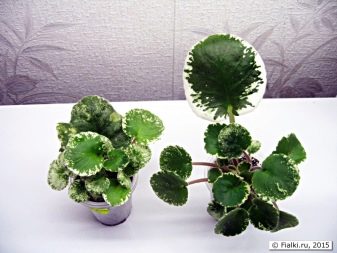
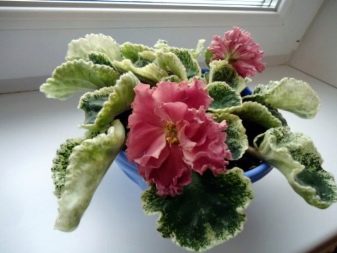
Temperature
For almost every plant growing in mountainous areas, a better temperature would be + 18– + 25 degrees. The most favorable temperature for the "Chic Poppy" is +23 degrees. It is better to avoid drafts and ventilation, since the plant simply does not tolerate temperature extremes.
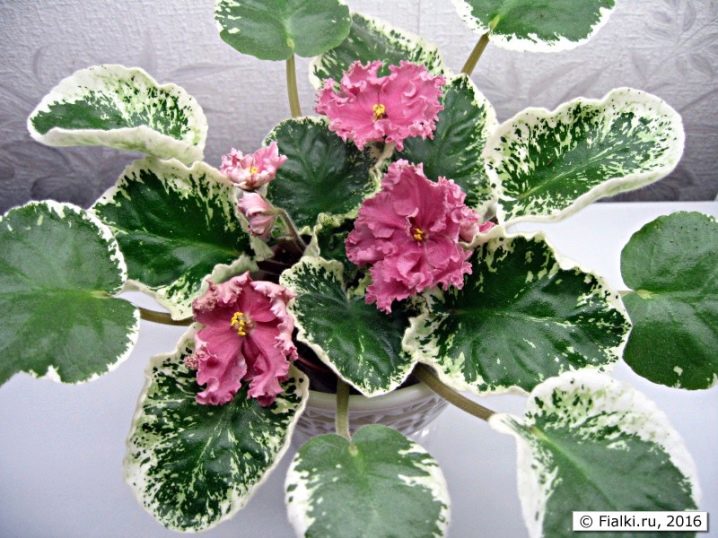
Humidity
Another extremely important factor in the cultivation of this Saintpaulia is air humidity. It should be between 50 and 70 percent.Sprayers or indoor fountains can be used to maintain this level of humidity. However, it is very important that no droplets collect on the plant.

Transfer
The transplant should be carried out no more than 2 times in 1 year. It is also very important that during the transplanting process the plant is not in a state of flowering. Violets are transplanted, as a rule, in March or October. This happens in several stages.
- The first step is to select the desired pot. It is important that its diameter is one third of the size of the rosette. The depth should not be too great, because the root system of the plant is small, and with an excess of soil, acidification occurs. The choice should be stopped on plastic pots with a drainage hole.
- The backfilled drainage layer should not exceed 3 centimeters, but you need to use pebbles or brick chips. This plant loves loose and nutritious soil with an acidity of 6.5 pH. After acquiring the soil, it must be disinfected with boiling water or heating in the microwave.
- Further, the violet must be watered abundantly throughout the day. After checking the roots - if they are rotten, then the affected parts are removed, and the soil is completely changed to a new one. When the violet is healthy, it is transplanted by the transshipment method. Another case when the land should be completely replaced is the last transplant too old. All lower and diseased foliage are removed. If the plant has grown too much, then it must be divided into several equal parts.
- After the transplant, the plant needs watering after three days, but at the same time the soil at the time of transplantation should be slightly moist. To maintain this moisture, Saintpaulia can be covered with a jar.
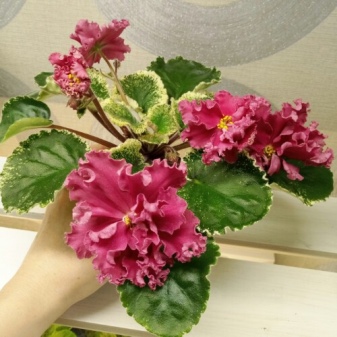

Care
It is quite difficult to care for the "Posh Poppy", so this issue should be given special attention.
Watering
When watering a plant, it is important to find that same golden mean when the soil becomes not too wet, but not too dry. Water should not fall on the aboveground part, as this provokes decay. Watering is necessary along the edges of the pot. Some resort to the so-called wick irrigation - for these violets, it is considered the best. This happens as follows: a wick from a cord is installed into the drainage hole, which is subsequently lowered into the water. As with any other plant, water is required at room temperature.
In the summer, the plant requires a little more water. And also it does not hurt to wipe the leaves from dust from time to time, and then blot them with a paper napkin.
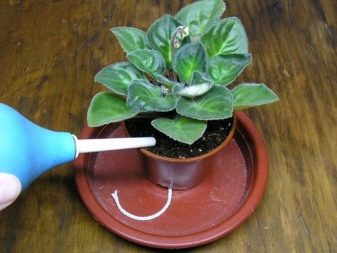
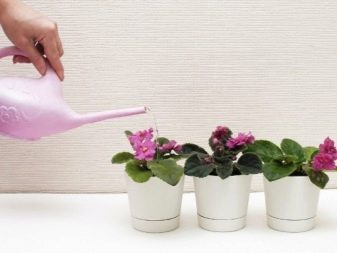
Top dressing
As a rule, the most active feeding should be carried out during abundant flowering, namely, at least once a week. When the temperature drops, the feeding process is reduced to 1 time per month. It is best to feed this Saintpaulia with liquid fertilizers. For a young plant, nitrogen-based fertilizing will be the most relevant, but for an adult - potash and phosphorus fertilizers. It is very important to pay attention to the next moment - the normal acidity of the soil. The optimum acidity is 6.5 pH, and too large deviations from this norm cause depletion of the flower, since fertilizers are simply not absorbed.

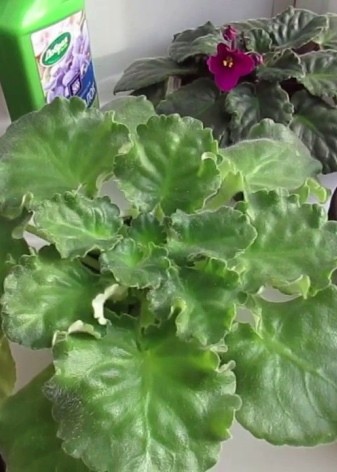
Pruning
Dry or old leaves are usually pruned. And it also does not hurt to remove the side rosettes from a plant that is too thickened. With too much light, the foliage begins to curl up, so it is also cut off. Another case where pruning is simply necessary is a bare stem. Bare occurs usually when the plant is transplanted extremely rarely. In this case, it is necessary to cut off the top between two flowering with a sharp knife. If peduncles are found, they are also removed.
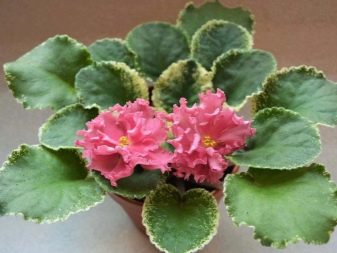

Reproduction
An extremely important stage in the life of any plant is reproduction. It is very important to carry it out correctly, without making any mistakes.It is best to reproduce "Posh Poppy" by means of leaf cuttings and children. The plant is able to give a lot of daughter outlets, taking root with ease.
Experienced gardeners advise breeding during the transplant period. It is necessary to pull the saintpaulia out of the pot as carefully as possible, separating the stepsons from the root system, and then plant them in small pots.
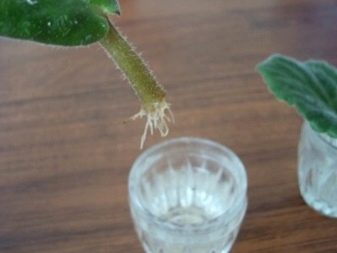
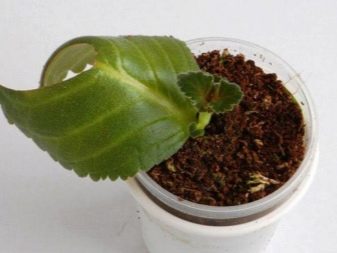
Another fairly simple way is to transplant with leaves. It is carried out as follows:
- you should carefully cut off the leaves from the bottom of the violet; the length of the selected handle must be at least 1.5 centimeters;
- after removal, it must be placed in settled water;
- starting from the moment the petiole has taken root, you can continue to transplant by planting it in a small pot with soil for violets and a drainage hole;
- further, the container is covered with a plastic bag and transferred to a warm and well-lit place;
- further, you need to take care of the daily airing of the package - at least 15–20 minutes; the soil needs to be moistened as needed;
- as soon as the first leaves appear, it is necessary to cut off the main leaf.
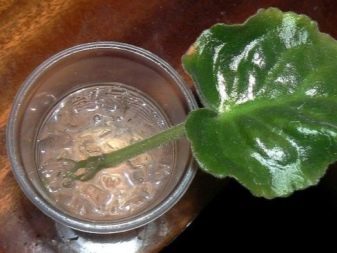
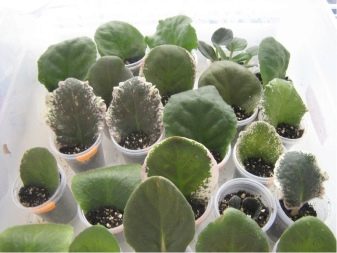
Diseases and pests
When growing such a plant vulnerable to diseases as "Posh Poppy", you should be well aware of all the possible diseases that the plant can face. Most often, the plant suffers from several diseases.
- Powdery mildew often found not only among these violets, but also among many other plants. The disease is fungal and manifests itself as a white bloom on the leaves. This is often due to excessive moisture and too low temperature. For treatment, drugs such as Topsin, Topaz or sulfur powder are usually used.
- Fusarium. In the same way as in the previous case, the disease Fusarium is fungal. Its appearance is provoked by too large pots and sudden temperature changes. Leaves and roots are subject to rotting, and then completely disappear. To treat a plant from fusarium, fungicides should be used, while eliminating all diseased areas.
- Late blight. A plant affected by late blight becomes brown and gradually begins to lose leaves. The first step is to remove the flower from its pot and carefully examine it, revealing the affected areas. In case of severe damage, the plant must be disposed of, leaving the stalk.
- Gray rot. It is quite easy to distinguish this disease from others - a gray bloom forms in various parts of the plant. It is usually infected through the soil. The infected areas must be destroyed, and the rest of the plant must be treated with fungicides.
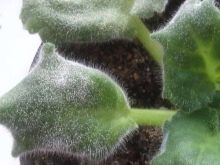
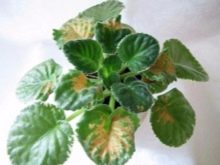
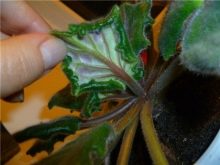
However, you should not focus only on diseases, because parasites are another threat to the plant. The most common ones are worth considering.
- Spider mite. When it settles, the leaves begin to gradually turn yellow, and the growth of the flower slows down noticeably. Particularly attentive gardeners may notice a thin cobweb. To combat such a mite, you will need a soapy solution or chemicals. Spraying should be carried out no more than 3 times, while observing the interval of 7-9 days.
- Thrips. In the presence of this pest, anthers and flowers are affected. The buds wither away, losing all the pollen. The drug "Actellik" is perfect for treatment. It is recommended to spray 2-3 times at intervals of 1 week.
- Mealybug. Another extremely unpleasant pest, which can be detected by a white bloom on the leaves and roots. In this case, a soap solution and a complete replacement of the soil are required.
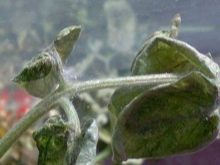
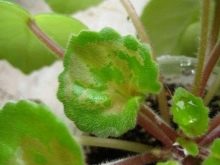
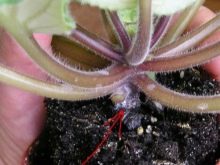
It is difficult to look after "Posh Poppy", because it is very demanding and whimsical. However, when all the necessary conditions are created, the plant will thank its owner by decorating the windowsill or garden.
For an overview of "Chic Poppy" violets, see the video below.































The comment was sent successfully.